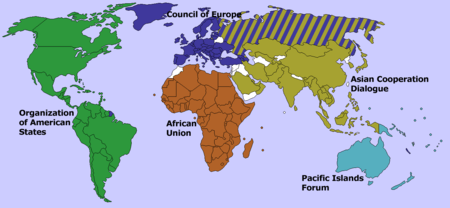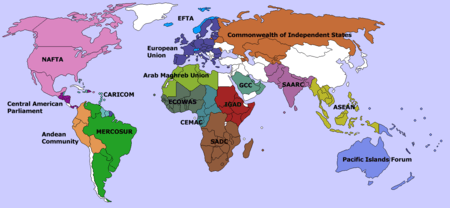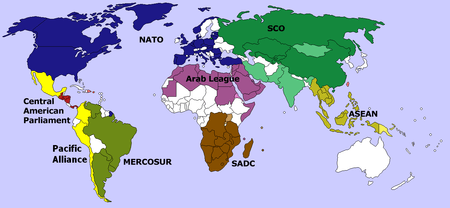Regional organization



Regional organizations (ROs) are, in a sense, international organizations (IOs), as they incorporate international membership and encompass geopolitical entities that operationally transcend a single nation state. However, their membership is characterized by boundaries and demarcations characteristic to a defined and unique geography, such as continents, or geopolitics, such as economic blocs. They have been established to foster cooperation and political and economic integration or dialogue among states or entities within a restrictive geographical or geopolitical boundary. They both reflect common patterns of development and history that have been fostered since the end of World War II as well as the fragmentation inherent in globalization. Most ROs tend to work alongside well-established multilateral organizations such as the United Nations.[1] While in many instances a regional organization is simply referred to as an international organization, in many others it makes sense to use the term regional organization to stress the more limited scope of a particular membership.
Examples of ROs include the African Union (AU), European Union (EU), the Caribbean Community (CARICOM), the Arab League (AL), Association of Southeast Asian Nations (ASEAN), South Asian Association for Regional Cooperation (SAARC), and Union of South American Nations (USAN).
See also
- International organization
- List of intergovernmental organizations
- List of regional organizations by population
- List of trade blocs
- Regional Economic Communities
- Regional integration
- Supranational union
References
- ↑ United Nations. "Cooperation with regional organizations", in Annual Report of the Secretary-General on the work of the Organization 1995, ch. 4
2. Rodrigo Tavares (2009), Regional Security: The Capacity of International Organizations. London and New York: Routledge.